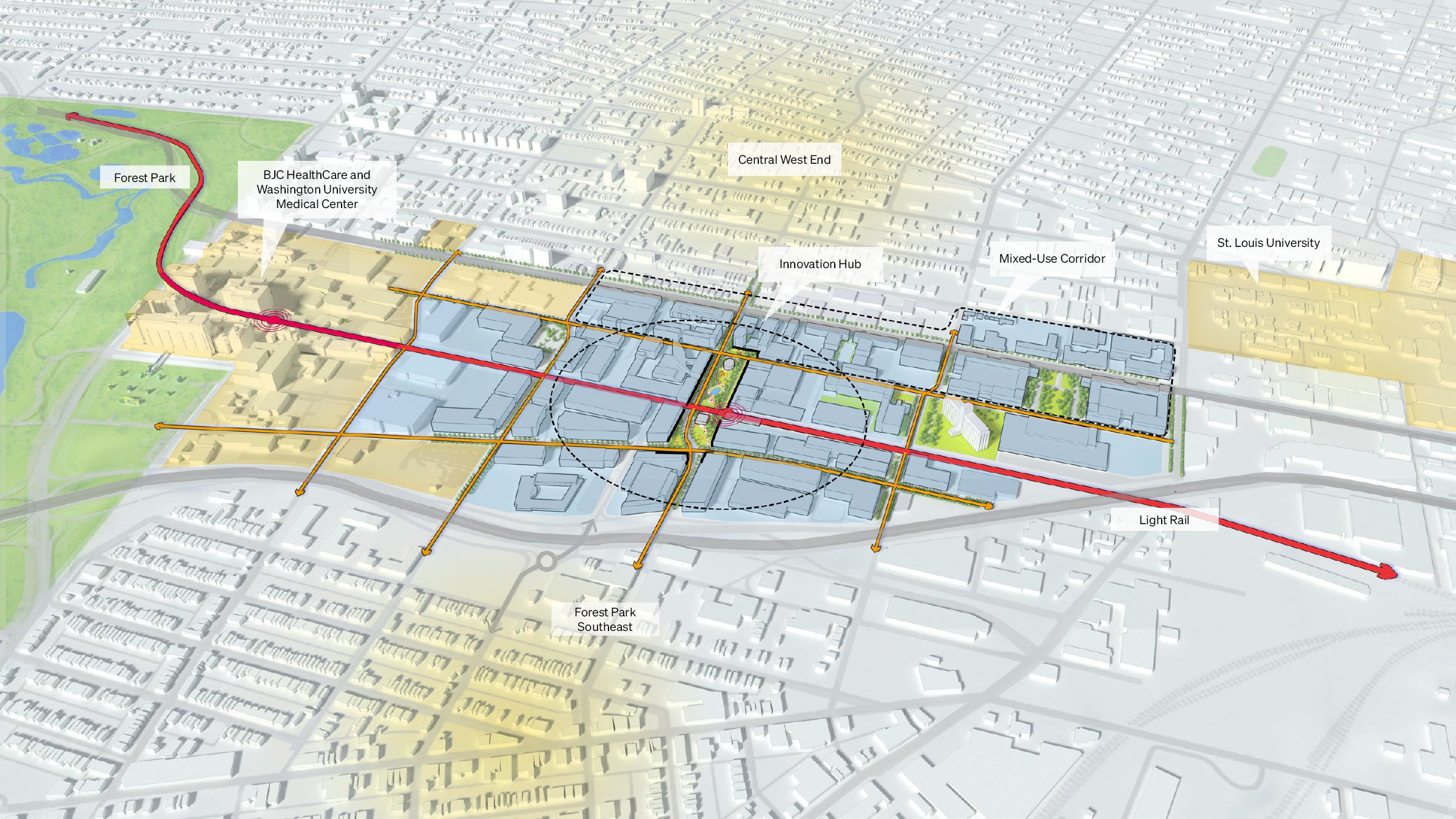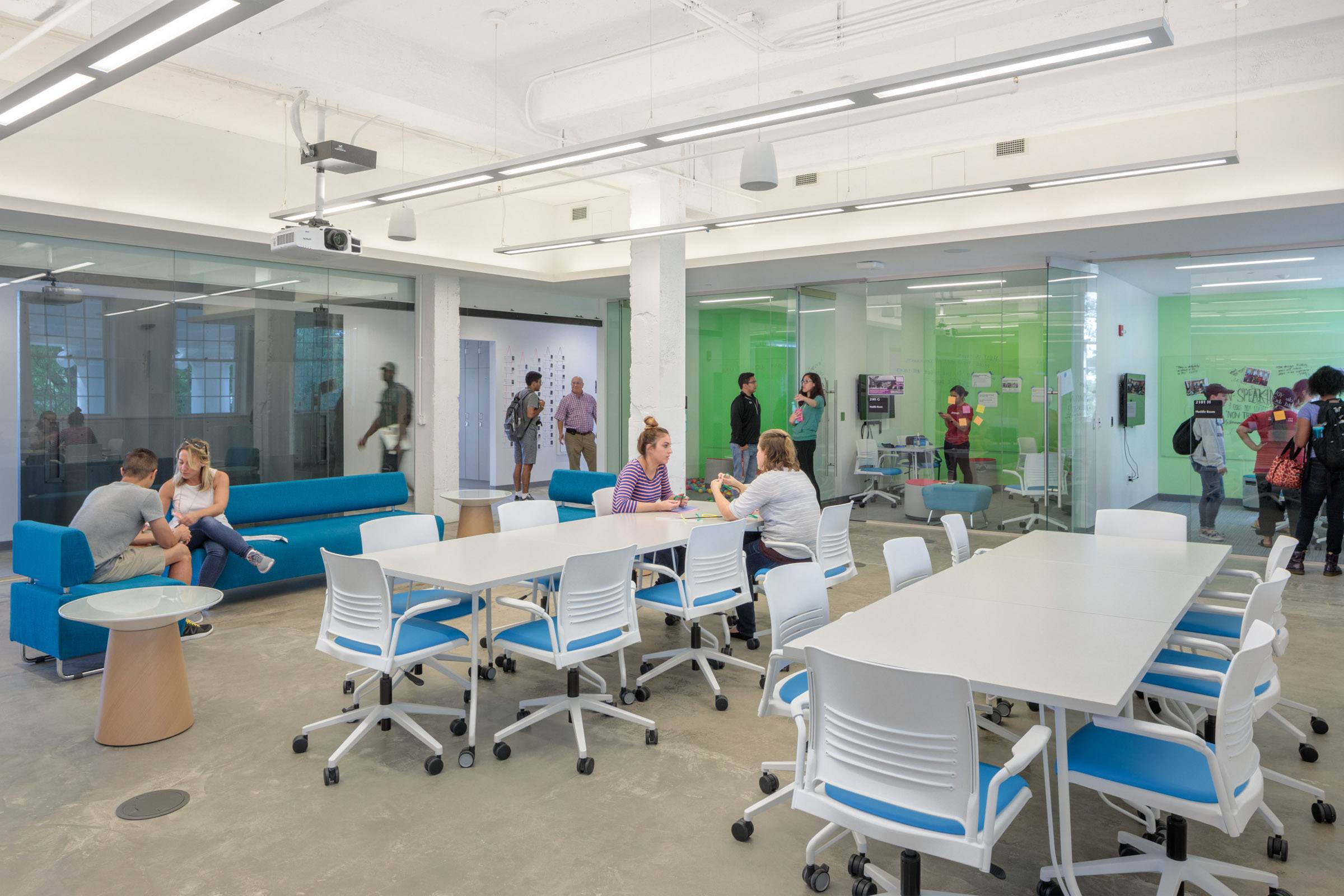In 2002, several major St. Louis institutions had a great idea: they would combine forces to create the Cortex Innovation Community, a mixed-used community that would combine academia, government, and industry.
It was a visionary concept that saw how the isolated research parks of decades past didn’t really serve innovation or the innovators. People wanted to live and work in close proximity, and to catalyze and distribute the discoveries that came out of research more efficiently. With a $29 million dollar investment, the institutions set out to transform a decaying area into a center of research and enterprise.
There was one problem: the district’s physical environment did not support the vision. The envisioned hub of bioscience and technology innovation was just a loose collection of inwardly-focused buildings surrounded by pavement. The area lacked what one writer calls “collision density,” the rate of interaction between scientists and entrepreneurs.
By 2012, the district needed a new vision and significant investment in its physical place. The lead institutions and their developer partner, Wexford Science and Technology, asked the Ayers Saint Gross planning team to create the Cortex Innovation Community Master Plan. The plan was a vision to transform the 200-acre industrial corridor into a vibrant, 24-7, live-work-play-learn innovation community.
Transforming Cortex into a thriving innovation ecosystem required getting a diverse set of stakeholders to think and act like a community. Conversations with city officials, entrepreneurs, university and hospital leaders, students, researchers, and local developers revealed a disconnect between the users’ idea of community and its manifestation in the physical environment.
The integrated planning strategy brought together the following elements:
- Program. People and ideas do not come together by chance. We tapped into lessons learned from rigorous study of the anatomy of research environments to envision shared spaces and innovative programming to support emerging companies.
- Placemaking. Cortex needed an identity and a physical plan that mirrored the community everyone wanted. The new model focused on density and diversity of use, strong transit connections, animated streetscapes, and open space.
- Investment. Access to capital and financing resources are essential to physical and programmatic transformations. A deliberate mixed-use land use strategy which included a TIF district set Cortex up for success.
Although the master plan is a long-term planning document, it needed to address immediate placemaking challenges, include the creation of a central park, flexible research space, and walkable streets with trees. Prioritizing development around a central node made it easy to envision Cortex a true community.







